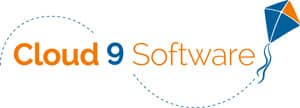“We have nothing to fear except fear itself” are words made famous by Franklin D. Roosevelt. Most of us fear change and learning what we think will be complicated things, but often it is only our fear of the unknown that is holding us back. Common fears about converting an orthodontic practice from one practice management software to another include being afraid of losing data, creating too much disruption, or being intimidated by the amount of training involved.
We spoke to two orthodontic practices that recently switched to Cloud 9 Ortho about what they dreaded leading up to the conversion and what the experience was actually like. They also shared tips for other orthodontic offices nervous about taking the plunge.
Rogers & Andrews Orthodontics
Macy Grubb is an insurance coordinator and has worked at Rogers & Andrews Orthodontics in Augusta, GA since 2018. She has been using Cloud 9 Ortho since her office switched in August 2021.
She reports that the biggest fear she and her colleagues had was that all of the data from patients’ charts, including images, would not get transferred over to the new system. Also, as the person in charge of insurance, Grubb admitted feeling scared that many things could go wrong for her job in particular.
“Of course, you’re going to have bumps along the road when you’re switching from one system to a whole new one that you’re not familiar with, but it was great,” she says.
The transition process was guided by two Cloud 9 trainers who visited the office in person for several days.
“It was great with them because they came in in such a bubbly manner that it dissipated our fears a little bit,” Grubb remembers. “It made it kind of fun.”
The trainers sat down with the entire staff and went over what was going to be happening. After an overview of the software, they had activities printed out for each person’s role so that way they could practice. If the staff had any kind of questions or any problems that they came across, the trainers made sure to address those before they left.
She says any questions that popped up after the trainers left were handled on the phone immediately. Grubb reports that the support center had been great with the conversion process.
And she found that the conversion was a lot less difficult than she anticipated overall, and she did not have to worry about everything transferring over or working properly.
“I think the worst that we had is an image or two, but we still had access to our old system, so it wasn’t hard to get a hold of it to transfer it over,” she says. “And that was probably only a couple. We really didn’t have anything lost.”
Once she began working with the software, she quickly noticed features that made her job easier. For example, she was able to fix and resubmit rejected insurance claims quicker than before. And communicating with patients was much easier. She no longer had to go through multiple processes to create letters.
“Cloud 9 is great because you can just create the letters right there from the patient’s chart, send it to the doctor, he signs it and then you just send it out,” she says. “Communication is great, especially if you want to email the patient anything, it automatically saves to their chart.”
Her advice to other offices considering new software is to just be patient and give it a chance.
“If you have questions, ask, because everyone was so helpful and if they didn’t know an answer, they were able to direct you where you needed to go,” she says. “It helps so much. It makes things run a lot smoother and quicker as well.”
The Braces Place
When The Braces Place in Lexington, SC, decided to make the switch to Cloud 9 software, practice owner Daniel Pennella, DMD, put one of his treatment coordinators, Laura Conrad, in charge of making sure the conversion and training process went smoothly. Conrad was uniquely qualified for the job because of her 29-year background in orthodontics and a 10-year career working with a computer software company that specialized in orthodontic software.
She was up to the task but felt nervous about the switch because she knew data conversion can be tricky. Also, never having worked with Cloud 9’s software, she feared it wouldn’t do everything that she needed or wanted it to do.
In order to prepare, Conrad spent time cleaning up the data so that the data conversion would be as flawless as possible.
“Whenever data converts, if you have crappy data in your existing system, when it pulls over into a new system, it can convert crappy data into the new system,” she explains. “So it’s garbage in, garbage out.”
To clean up the data, she recommends practices look at things like the statuses of patients as they move through their history in their office—from being a new patient to someone who’s not ready for treatment, to someone who maybe is having early orthodontic treatment or phase one to between phases to full treatment or when they’re finished.
Conrad notes that for The Braces Place, most of the data converted just fine, but there was a challenge that need to be addressed related to image transfer.
“The reason there was a problem with our data conversion with the images is because our practice is 38 years old and we have a large imaging database,” she says. “We had a lot of years of data from multiple locations, two locations that were merged into one location when we acquired another office.”
The conversion process went through Friday, Saturday and Sunday. By the time the software went live, the images were still loading, but Conrad didn’t consider it a problem because she still had all of the financial and patient data she needed.
Training took place over several days starting with a Monday morning. Conrad says most offices need to reserve two or three days where patients are not scheduled so that the staff can focus on learning the new software. The trainers remained for the go-live day when clinical visits resumed.
Conrad came away with some key takeaways about training. First, she always recommends in-office training because people are hands-on with the software and they ask more questions than if they’re just listening to it or watching it on a webinar.
“Training started with what’s called a ‘dummy database,’ where you can go in and play with the data as much as possible, make changes in our contracts, make financial adjustments, make treatment card entries as much as possible, and you’re not hurting or making entries in legitimate patient charts,” she says.
As the training progresses, staff begins working with real patient data.
“For doctors, this is a chance to observe your staff in learning mode,” she says. “Don’t judge them as they may be nervous while learning.” She adds that a lot of team members express their concern with “messing something up” in front of their peers or doctor.
Training is also a good time for orthodontists/practice owners to identify their new “rock stars.”
“Maybe you will see some that does really well with change and picks things up very easily,” she says. “Someone who just works in one area of the office could show some potential with more opportunities or challenges in another area of the office and never had the chance or the training.”
Although you can get ideas from your trainer of what some offices may do differently, training is not the time to discuss all of the changes you want to make to your current processes.
“Use the training time to learn how to use the software well and then implement changes gradually,” she says. “It is easy to get off track of actually learning the software.”
To make the switch even easier, she suggests practices try a lighter patient load the two or three weeks following installation of new software.
“Everything will be new and it is nice to have a little bit of buffer time to allow for the learning curve,” she says. “Let patients know that a new software has been installed and ask them to please be patient and kind as your staff is getting back to normal speed with the new software.”
Lastly, Conrad recommends taking advantage of meetings offered by the software company. “It will confirm what you have learned and show you all of the new features and allows you the opportunity to get know about the exciting new changes coming in the future.”
Watch A 15 minute On Demand Demo
Get needed demographic info, billing info, all relevant imaging & annotations, treatment plan templates or workflows, and the customizations you can make to meet the needs and preferences of your practice.
Sponsored by
Medqor is committed to protecting and respecting your privacy. We may contact you about our products and services or share information with sponsorship partners, as well as other content that may be of interest to you. By submitting your information, you consent to us contacting you for this purpose in accordance with our privacy policy.
For further information, please check out our privacy policy here









